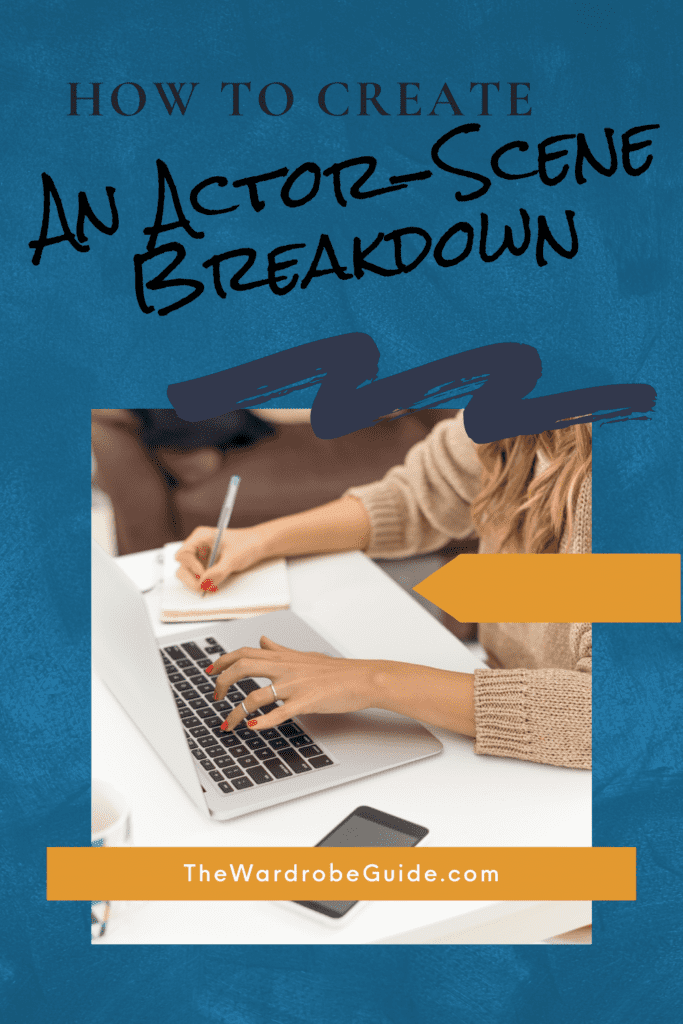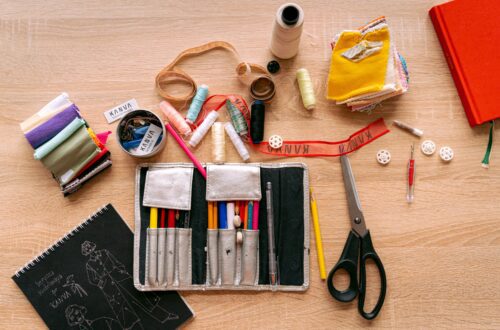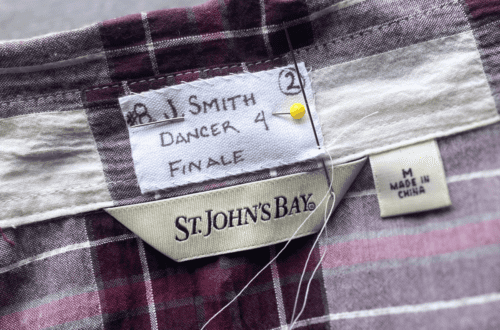An Actor/Scene Breakdown is a spreadsheet used to track actors, characters, and costumes throughout a show.
To make an effective first draft of this breakdown, you don’t need to know about the actors who are cast or the show’s design. This is why the ASB is a perfect first project when you are trying to familiarize yourself with the script. You can make your first pass at your actor/scene breakdown as you read the script for the first time.

We are going to talk through what an actor/scene breakdown is. We will cover why it’s helpful and ways yours might change heading into tech for your next show!
If you are interested in other paperwork a Wardrobe Supervisor might make, check out our article here!
Who Makes the Actor/ Scene Breakdown?
Sometimes, you will be able to receive a plot from the Costume Designer. The costume shop manager, or sometimes even stage management might also create similar paperwork. However, it is not uncommon in regional theatre that others might not have time to create an ASB. There is also the possibility that others will make one eventually. However, they might not be able to get it to you by the time you start attending production meetings for the show.
It is not a bad idea to create your own plot as the Wardrobe Supervisor. This will help you start stringing the show together in your brain, or to flag any spots that you might have questions about in early production meetings.
Why Do I Need an Actor/Scene Breakdown as a Wardrobe Supervisor?
Oftentimes, at the beginning of a show’s production process, there might be a lot of ideas flying around. Maybe some exciting ideas were had by the director or designers. Possibly ways to cut corners or make production cheaper.
Having an ASB formulated gives you a tool that you can show other departments for reference when you might flag an issue.
It also makes it clear to others why you might need to ask for something like another dresser or a quick change booth close to the stage if you are able to show people that you are going to, perhaps, have 5 actors changing simultaneously multiple times in the show.
It will also serve as a way to force you to fully absorb a script if that is something that is difficult for you.

In What Way Is an Actor/Scene Breakdown Helpful for Wardrobe?
As we said earlier, an actor/scene breakdown really helps illustrate your needs as the show is being fleshed out. It also helps you bring up possible issues early so people can start brainstorming solutions.
(I.E. if a character is covered in blood in 1.4, then is attending a ball in 1.5, what does that mean? How much blood are we talking about? Is it live blood? Or is it just painted on her costumes? If live, will we need someone at the ballgown change with makeup wipes? Will she need to touch up her makeup for the ball?)
You can’t change how the script is written. However, bringing attention to things is important to get everyone on your team to discuss them. This way, it doesn’t become a wardrobe-only problem that no one has time to fix at the eleventh hour.
Is an Actor/Scene Breakdown Helpful for the Actors?
Yes!! One of the most stressful parts of teching a new show can be the addition of costumes. Costumes add a whole new choreography to the show– the backstage choreography. Oftentimes, this choreography is given a minuscule amount of time to work out compared to the onstage choreography.
With a working actor/scene breakdown, however, both the actors and the dressers will be able to use it as a reference when discussing what they should do next/ when they should change their costumes during the run of a show. It also gives actors and dressers a visual to look at when gauging how long they have for a specific change.
Oftentimes, during tech people will underestimate how long they have to do things. It’s also not unheard of for people to forget that they have a whole ballad to change their clothes!
How is a Wardrobe Actor/Scene Breakdown Different from a Costume Designer’s Plot?
While a designer might be making a costume plot, theirs may be more focused on the artistic points of the script, or things that they could be concerned about when it comes to their design.
As the wardrobe supervisor, you will probably be more focused on the technical mapping of the show’s costumes.
That is not to say you will never be able to simply use your designer or shop manager’s plot. Depending on the show and the team, sometimes, they have already put together all the information you need.
Typically, before I start working through my own breakdown as a Wardrobe Supervisor, I will ask everyone else on the costume team for the paperwork that is already in existence. You may be able to save some time!
What Information Do I Need To Make an Actor/Scene Breakdown?
All you need to start the first draft of your breakdown is the script for the show you are supervising! We suggest printing out a hard copy of the script. This way, you can highlight or mark it up! This also makes it easier to flip between pages.
If you have a cast list for the show already, you could absolutely include the actors’ names in the first draft of your plot as well. If you don’t have a cast list, don’t worry about it! You can easily update your plot in a later revision.
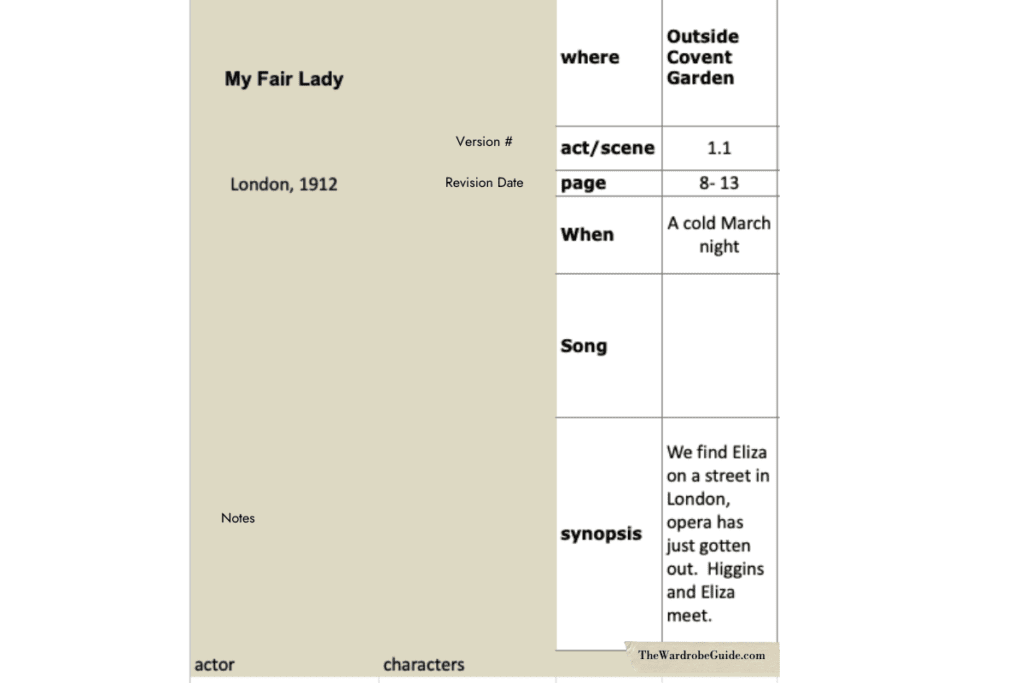
Some helpful information to include would be page numbers, Scene numbers or titles, songs, and anything noted in the script that could affect the costumes. Remember, this is a tool for you as you navigate your new show, so the more information you include, the better!
On the left, You can see an example of the information I might include in a breakdown! This information can be different, depending on the show.
The last thing you want is to be in a conversation with your designer, ask a question about something from the script, and then not be able to find the part in the script while you are on your Zoom call.
How To Format The Actor/Scene Breakdown
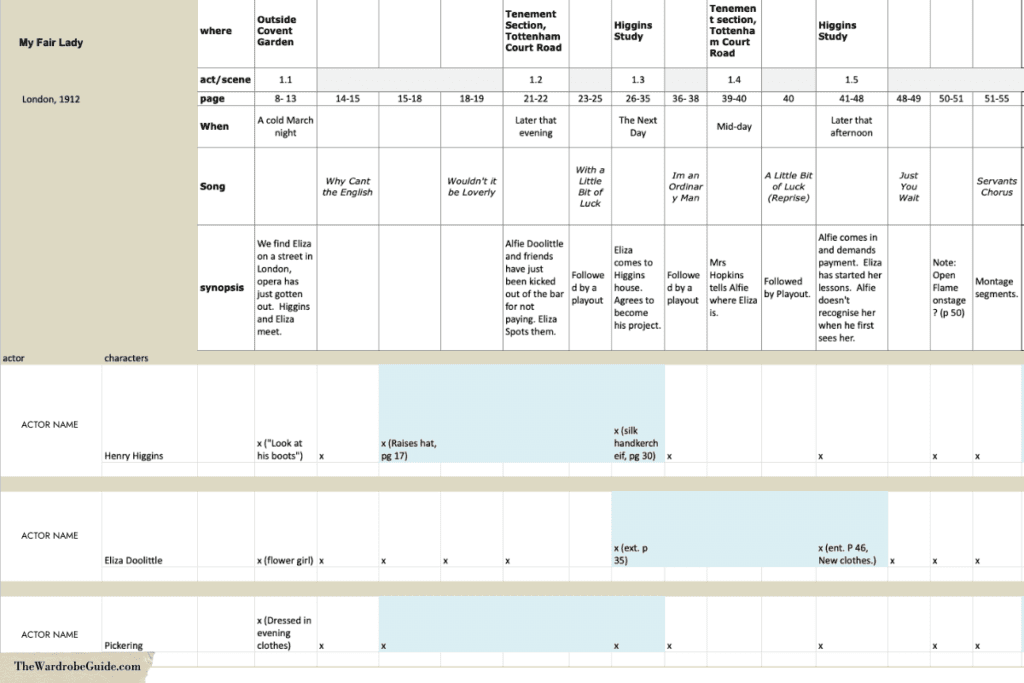
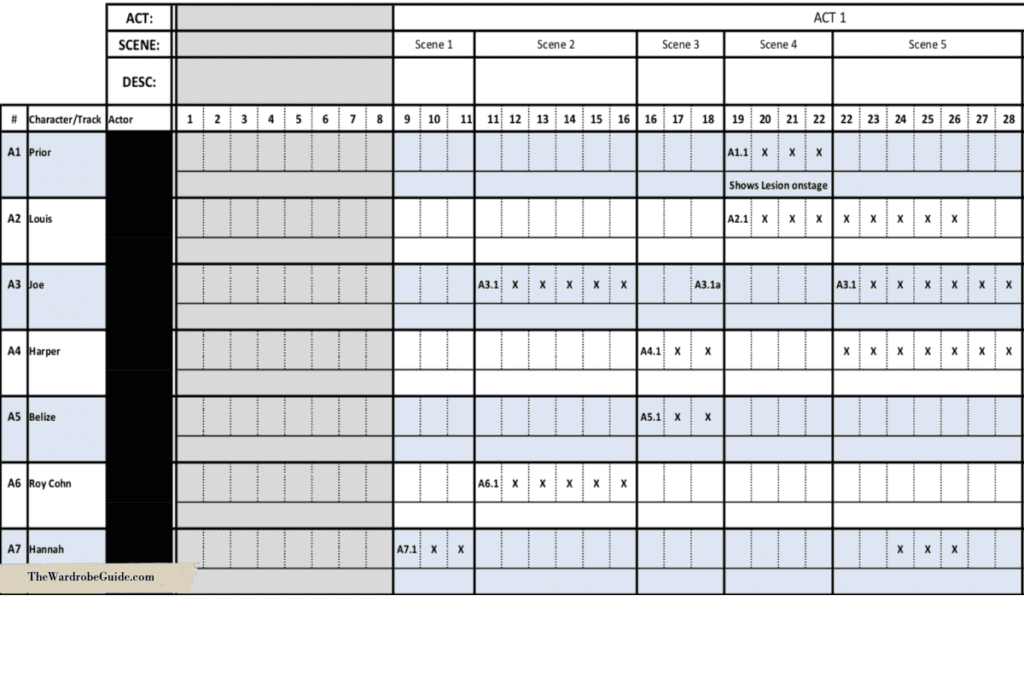
There are many ways to format an Actor/Scene Breakdown. When making your plot, it is important to think about the information that is important to you, as well as the “phrasing” of the show. Most stage shows have a way that they organically want to be broken up. Above, we have two examples. One is a musical which really wants to be broken up by song and/or scene– typically, the costume changes in this show are connected somewhat to the songs. You can see that the page numbers in the breakdown split the scenes into “pre-song”, “song”, and “post-song” chunks. With certain shows, this helps keep the physical length of the plot smaller and more manageable.
On the right, you can see that the plot contains a lot less information about the ins and outs of the scenes, but it is formatted page-by-page. This plot is from a play with no music, so it doesn’t have the specific numbers as ques to break things up.
How Does The Breakdown Evolve During the Production Process?
As there are more production meetings, and the actors/ secondary roles get settled, you might make a 2nd or 3rd draft of your plot.
Your plot might evolve differently depending on many variables. Depending on the information you have, how information changes, or the show you have at hand. If the show isn’t very complicated, you might not need more than one draft.
However, we included below how your breakdown might change over the process of a production.
First Draft
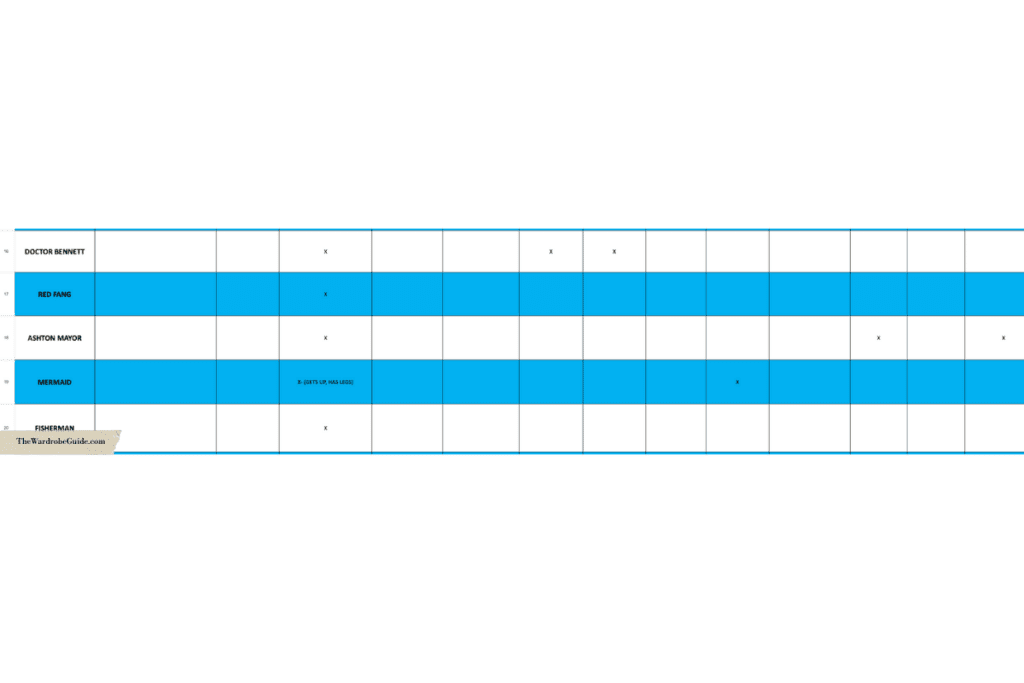
For your first draft, you are typically going to be pulling all your information straight from the script. Characters don’t need to be grouped by actor yet unless noted in the script. For this pass, you really are focusing on the specifics laid out in the script.
This version tends to be a long list of characters. Be sure to include any bit parts you see, and exactly where they show up– even if they don’t appear more than once.
Make Mental Notes of Possible “Problem Spots”
An excellent wardrobe supervisor is always 3 steps ahead. Pay attention to is any details in the script that could affect wardrobe at all. In the example above, we noted that there is a mermaid in the scene. In the script, it says the mermaid “gets up and has legs”. We don’t know what that means yet, so all we can do is note that it is there so it stays in our mind.
Wardrobe usually aren’t the ones that handle coming up with a solution to challenging script needs. Typically, these ideas will come from the design team. However, it might be up to the wardrobe supervisor later to ask the designer to explain to us what this will look like. (I.E. will it be a removable costume piece that will be caught by an actor and end up backstage? Will wardrobe have to go looking for it? Is it a trick costume that wardrobe will need to set up?)
Second Draft

In a second draft, it isn’t uncommon to still have a couple of characters that aren’t assigned to an actor.
If you didn’t add the actors to the first draft, the first thing you’ll want to do with the second draft is group the different characters from the script by actor. Then, if it’s helpful, you can use colors to highlight areas where costume changes will definitely happen.
Keep in mind, you aren’t designing the show. This means you aren’t making any artistic decisions. You are more looking for notes from the script that the designer will most likely follow. For example, a character has dialogue in the script about a different character’s red dress. A stage direction about an actor grabbing their hat and coat and running off stage.
One idea is to highlight costume changes in one color, and then quick changes that will need help in another. This way, it becomes easy for anyone to glance at your plot and understand why certain areas might be problem spots. You could also use a 3rd color to highlight any areas you have questions about for the shop manager or designer.
A big reason why costume plots can be very helpful is that it makes it easier for you to visually show issues to other departments in a way that someone who isn’t versed in costuming can understand.
Third Draft
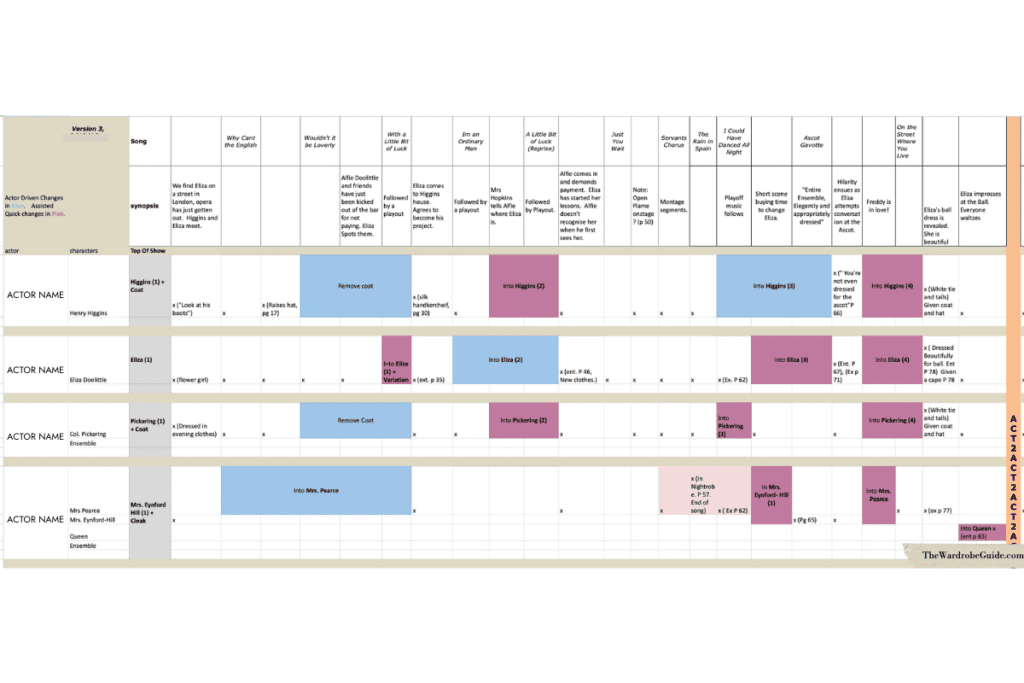
By the third draft, you most likely have seen the designer’s costumes. This might mean you are able to slot into the show the different looks in the actor’s tracks. You might also be interested in adding a column to the front of your spreadsheet that states the top-of-show looks.
Notice that in this draft, we filled in the charted-out changing times with the specific costume that the actor will be changing into at that time. This helps us start to visualize if a specific change will have complex pieces/ wig changes involved as well.
In this specific breakdown, we also color-coated how fast we were assuming the changes were going to be. This is because this production had a limited number of dressers, and we wanted to make sure everyone was covered for the fasted changes.
At this point, you will have most, if not all, of the information you can pull from the script and cast list formatted onto your plot. For your next steps, you will use this information to format your piece lists and the first draft of the run plot that you might enter the tech process with.
Do you have a favorite way to format an Actor/ Scene Breakdown? Do you have any tricks to make your breakdowns more effective?
Want to let us know if this information was helpful to you?
Let us know in the comments!

